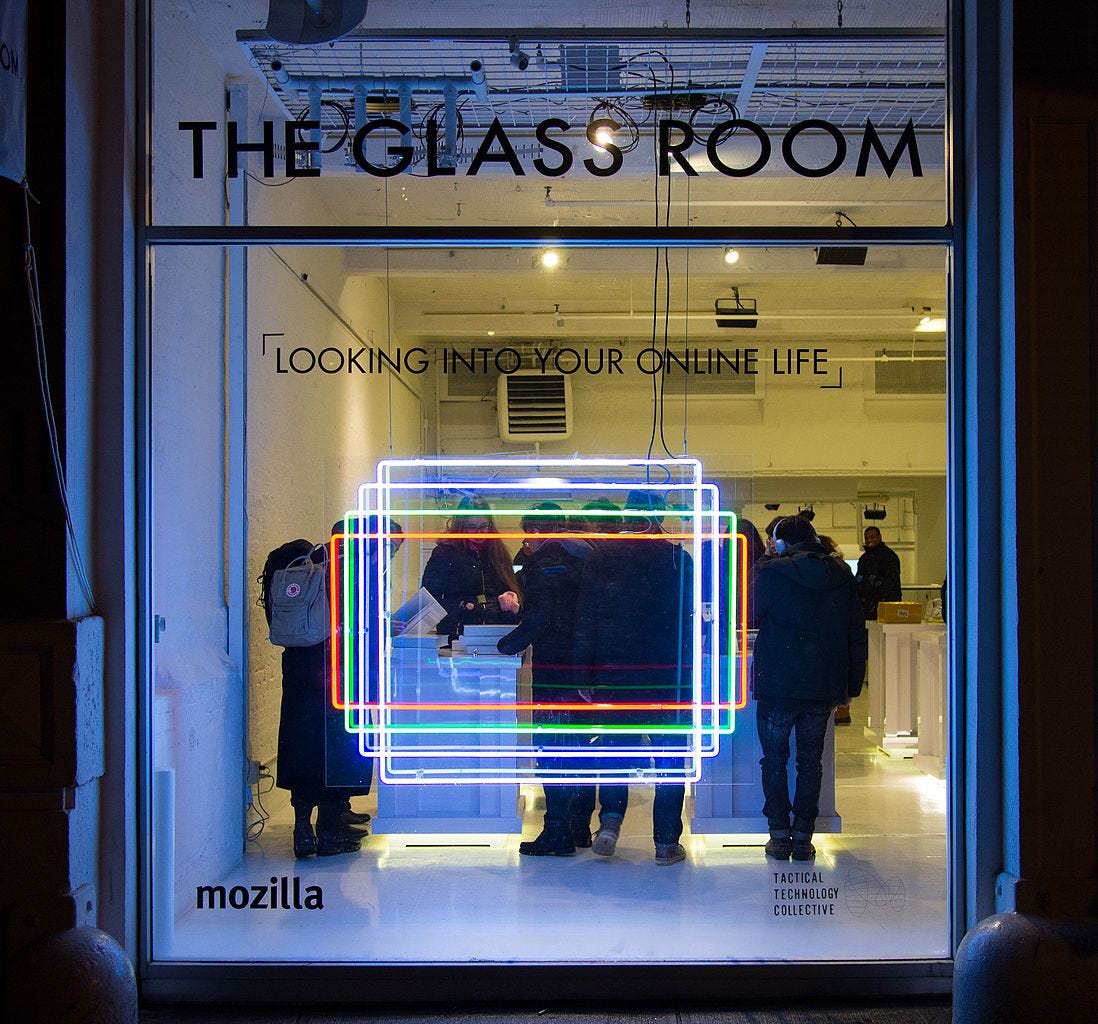
Labour Day Demonstrations in Ånge, Sweden. Kulturarv Västernorrland, CC BY-SA.
What’s the connection between digital and political discourse in and with cultural heritage institutions? Have GLAMs become increasingly more political at the same speed as digital media and tools have gained importance in our institutions? And what is our role, as professionals in the sector in this development? Follow along for a discussion on GLAMs taking a political stand in the digital realm.
When we look into our calendars, crisis is a subject of quite a lot of conferences and similar formats right now. There’s a global pandemic, pushing the cultural heritage and arts sector towards its boundaries; there’s a climate emergency putting our futures at risk; and there’s a rise of far-right, totalitarian, and extremist political movements. At the same time, we experience important developments that put social and political equity on the agenda, for example when we look at the Black Lives Matter movement. How do GLAMs act and react in these times? And do they actually need to?
Engage with us by using #GLAMsDigIt or leaving a comment!
In this issue, we are going to shed a light on institutions and initiatives who decide to act instead of watching dangerous political tendencies, who are using digital tools and media to engage with their communities on political issues, and who are themselves endangered in their scientific and artistic freedom because of political developments
1. Let’s Talk About… GLAMs and politics in the digital realm
Larissa: ‘Are museums political institutions?’ has been discussed for what feels like ages. In my view, the world and our societies have answered that question for us. The work that GLAMs have done during the last decades has become political: We have to reflect upon the truths we want to represent; we need to take a fresh look at our collections and what they actually say about our institutions and societies. When I only look at the last months and the upcoming week (waiving at the US elections), I simply cannot imagine a world where GLAMs stay relevant while ignoring the vulnerability of their communities. And in my view, digital is crucial in this context, as GLAMs can play their role in this realm by providing context, facts, and a moderated space to meet and discuss.
One champion for example is Te Papa and their “The Current” format. They are providing an anonymous space online for people to reflect upon ideas and sometimes radical proposals to solve issues related to climate change. That topic might actually be a prime example for something that wasn’t considered political a few decades ago, but simply is today - and how GLAMs can take a stand in society.
Medhavi: Last week, the Art+Feminism team regrouped again for the 2021 campaign. So much is different - for example, we have decided to go beyond ‘Feminism’ and talk about ‘Activism’! A few years ago, I wouldn’t have thought of Wiki editing as activism - but in the age of information, its use by GLAM institutions worldwide and the coordinated effort have left me feeling so inspired! In the course of leading Editathons and similar events at museums, I have often wondered - what are the other ways in which GLAMs can foster activism? What role does digital technology play? I see museums as storytellers and bridge-builders; by sharing their object stories and channeling their histories, they give context to our present and show us what is possible; connecting people across boundaries!
In the post-pandemic time, how can GLAMs unleash the power of digital content and “information activism”? Find out more later in this issue!
Larissa: You touch upon an important issue here: How GLAMs themselves don’t have to become activists in order to support people in finding their own truths and paths to political action. One example that comes to my mind when thinking about that is the National Museum of African American History & Culture in Washington DC and their initiative “Talking About Race”. They acknowledge that “[t]alking about race, although hard, is necessary” and provide the resources to empower people and inspire conversations. And you have to consider the political climate in which this Smithsonian institution is acting.
Medhavi: In India, as communal divides continue to increase, it is time for museums to provide resources for analytical thinking, inspiring conversations, and helping their communities find facts and information! A few months ago, India’s Mughal legacy was questioned by a Minister, and a museum under construction was renamed from ‘Mughal Museum’ to ‘Chhatrapati Shivaji Museum’. While historians engaged on the Twitter battlefield rather bravely, it would have served museums well to explore this as an opportunity for an evidence-based discourse or even do something as simple as offering resources for teachers! After all, museums are knowledge institutions, right?
What do you think? Should GLAMs provide spaces for discussion or try to stay as neutral as possible? Share your point of view with us!
2. Shout out to… Lonnie G. Bunch III
The Smithsonian is doing amazing work on anti-racism, especially taking into consideration the political climate in the US. However, in order to be able to speak up against racism, people in GLAMs also need leadership and management to take a stand. That’s why Lonnie G. Bunch III, Secretary of the Smithsonian, and his public statements on this matter, for example on Twitter, play such an important role.


3. Favourite Discovery
Larissa: When we’re talking about the scientific or political discourse within the cultural heritage and arts sector, there is often a bias towards voices from the Global North. One of my favourite discoveries of the last months, challenging this bias, is the Open Restitution Project. It’s an “Africa-led project seeking to open up access to information on restitution of African material culture and human ancestors, to empower all stakeholders involved to make knowledge-based decisions.”
Molemo Moiloa and Chao Tayiana, the two founders of the initiatives behind the project, are doing incredible work in highlighting African perspectives on this matter and I truly recommend listening in on their Restitution Dialogues.
Medhavi: What I admire about this project is the resource-building approach to restitution. I am also reminded of a conversation with a colleague from Iran about an Instagram post on celebrating Navroze. We discussed how the narratives constructed by Indian museums based on Persian primary sources often overlook an understanding of cultural details. Instead of relying only on colonial writings and interpretations, there is an urgent need to collaborate on decolonizing museums to account for present-day practice. This project is surely an inspiration!
4. And Now For Something Completely Different

The pop-up exhibit “The Glass Room”, curated by Tactical Tech. Rhododendrites, CC BY-SA.
Medhavi: Going back to the term “information activism” - I first discovered it because of the folks at Tactical Tech in 2009. Their toolkit from a very powerful workshop remains a treasure in my personal library - but here’s something recent from them: The Data Detox Kit! From data privacy tips to breaking through the ‘filter bubbles’ and calling out misinformation on the internet, this is a great resource!
5. Upcoming
🗓 10 November Open Stakeholder Forum: a discussion on how museums can increase their impact in society today and in the future. The event is organized by Museums of Impact - and you’ll get to meet me, Medhavi, there! The Forum is in English and German and registration is open until 5 November.
🗓 11 to 13 November 2020 Europeana 2020, this year’s “designed for digital” edition of the annual Europeana conference, is going to focus on “Crisis, Change, and Culture”. Find out more and secure your free ticket here.
🗓 9 to 10 December 2020 Keep an eye on the upcoming Museum Computer Group’s Museums+Tech conference. Focusing on “Museums in a crisis”, they’ll discuss interesting questions such as “What role can digital play in responding to crisis and how might it be used to respond to issues of colonisation, access and inclusion?”. More information is available here.
Thank you for your attention! We hope you liked this issue of Dig It! - feel free to comment or engage with us on social media, using the hashtag #GLAMsDigIt. And if you know someone who might be interested in this newsletter, please share it!
Stay safe everyone!


